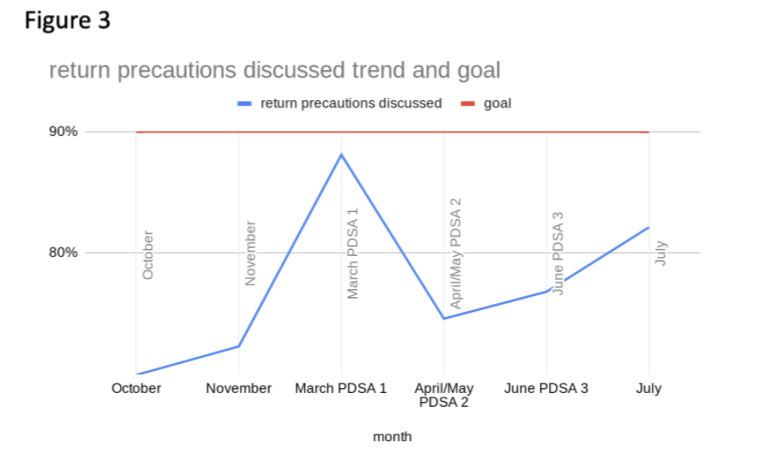Hospital Medicine 2: Quality Improvement
Session: Hospital Medicine 2: Quality Improvement
563 - Improving Health Literacy: A QI project with focus on discharge education - Ensure families “KNOW” before they “GO”
Saturday, April 26, 2025
2:30pm - 4:45pm HST
Publication Number: 563.5562
Daniel Rosenfeld, K. Hovnanian Children’s Hospital at Jersey Shore University Medical Center, Asbury Park, NJ, United States;Shanell Tulloch, K. Hovnanian Children's Hospital at Jersey Shore University Medical Center, Ocean, NJ, United States; Srividya Naganathan, K Hovnanian children’s hospital, Hackensack meridian health, Neptune, NJ, United States

Daniel Rosenfeld, MD
Resident
K. Hovnanian Children’s Hospital at Jersey Shore University Medical Center
Asbury Park, New Jersey, United States
Presenting Author(s)
Background: Health literacy is the ability by which patients understand and process information to make informed healthcare decisions for themselves or family members. Literature suggests that almost one-third of patients have below basic or basic healthy literacy skills while only 15% of patients have proficient literacy. Inadequate comprehension of discharge instructions leads to poor understanding of medications prescribed and adverse effects, leading to decreased compliance and unplanned readmissions.
Objective: The overall aim of our QI project was to improve discharge care understanding for patients discharged from the pediatric inpatient unit. Our SMART aims were to: 1. Improve understanding of discharge diagnosis from a baseline of 90% to 95%; 2. Expand discussion of medication side effects (if prescribed) from 52% to 75% and 3. Increase return to care instructions from a baseline of 72% to 90%.
Design/Methods: Preliminary data was collected by phone calls to randomly selected patients recently discharged from the inpatient unit to assess understanding of diagnosis, medication adverse effects, and return precautions. We excluded non-english speaking patients as we felt language barriers would be a confounding variable for the purpose of our study. This data provided baseline information and was used to create our goals for the project. Our QI project timeline was 9 months with 3 PDSA cycles, which included resident education with poster board reminders in work areas, hospitalist group input in facilitating discharge education, and nursing involvement in addressing these on patient discharge.
Results: Data was collected after each cycle by calling randomly selected patients recently discharged from the inpatient unit. Patients who were discharged by the QI team members were excluded to reduce internal bias. Results for our 3 variables are as follows: 1. Discharge diagnosis understanding increased from 90 to 96% (Fig 1) 2. Discussion of medication adverse effects expanded from 52 to 66% (fig 2) and 3. Return precautions comprehension improved from 72 to 82% (fig 3).
Conclusion(s): Although we did not meet all our goals, our QI project showed modest improvements in all 3 variables of discharge education. Our next steps are to empower families to participate in the discharge care of their children. We plan to do this by having signs posted in the patient rooms stating "Ask 3 before you leave!" and continuing to trend discharge literacy of our patients and families.
Figure 1
.jpg)
Figure 2
.jpg)
Figure 3



